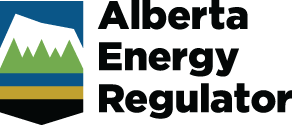Banner Image



The information (including data) contained herein was collected and is maintained by the Alberta Energy Regulator (AER). Use of this information and other information (collectively the "content") is governed by the terms and conditions set ("Terms of Use"). Any access to or use of the content constitutes acceptance of the Terms of Use.
The AER has not verified and makes no representation or warranty as to the accuracy, completeness, or reliability of any information or data in this document or that it will be suitable for any particular purpose or use. The AER in not responsible for any inaccuracies, errors or omissions in the information or data and is not liable for any direct or indirect losses arising out of any use of this information. For additional information about the limitations and restrictions applicable to this document, please refer to the AER Copyright and Disclaimer webpage.
While efforts have been made to ensure that the content is complete, accurate and current, the AER and their agents and employees are not liable for any loss or damage arising directly or indirectly from the possession, access to, publication, use of, or reliance on, that information or data. This information (including data) is provided without expressed or implied warranty.
